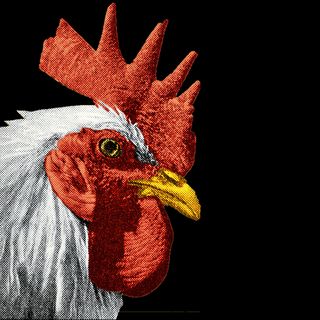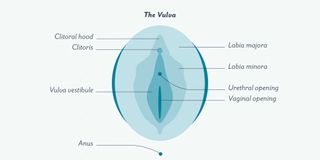As an eager-to-sex 17-year-old, I remember drawing the anatomy of female genitalia on a tissue paper for two of my gawking male friends to see and learn from. I come to you in a similar mood today: smug and generous. The vagina is oft considered an elusive mystery — one women are not taught to explore, and others are not told how to handle.
The failure of the Indian education system to comprehensively educate students about sex, combined with society’s deafening hush-hush around the activity and related anatomy, has made it difficult for women to know what’s going on down there — how or where to ask to be pleasured (resulting in a culture where they have to fake orgasms), how to identify genital problems, and how to do self-care or seek medical treatment. We live in a blissfully ignorant space where the vagina (which happens to exist inside the body, by the way) is conveniently labeled as complex, or dirty, which absolves us collectively of ensuring women’s sexual pleasure, or their sexual well-being.
So, read, imbibe, implement, and be sure to thank me later.
Related on The Swaddle:
A Field Guide to Having Sex While Pregnant
The vagina is technically only a small part of women’s genitalia, and not even the external part, despite popular use of the word as a catch-all. The vagina is the self-cleaning inner canal dedicated to conveying monthly blood and mucus passengers on their way from the baby incubator (a.k.a the uterus) to your pad. The vagina also hosts the occasional foreign object in the form of large and small, human or artificial, phallic-shaped objects. On either side of the vagina are the Bartholin glands, which secrete mucus. Basically, thank the Bartholin if you haven’t had to use lube during sex.
The outside of women’s genitalia is called the vulva. It’s what most confuse with the vagina, and serves as the protector of the genital realm. Within the vulva is the labia majora — the lips that contain oil-secreting glands internally and sprout infamous pubic hair externally. You may have been told the labia needs to be kept hair-free for hygiene purposes — that’s false. Within the labia majora are the labia minora, which exist as folds upon folds inside the outer lips. The labia minora surround the urethra (a tiny hole above the vagina that doesn’t serve any pleasure or reproductive purpose but through which women pee) and the opening of the vagina. The minora folds can come in a variety of shapes and sizes; they are what give the genitalia some personality.
On to the main event, the showstopper, the opening batsman — the clitoris. Most women’s sexual pleasure is aroused by stimulating the clit. It resides at the top of the vulva, within labia minora, as if presiding over sexual proceedings. The clitoris is how most women orgasm because it is blessed with thousands of nerve endings, which are stimulated when rubbed. The clitoris is a small nubbin, covered with a small skin fold called a prepuce (a.k.a the clitoral hood), which serves as the clitoral protector. It doesn’t just exist on the outside; the clitoris is a huge organ that extends inside of the walls of the vagina. TV and pornography, while glorifying that elusive penetrative orgasm, fail to mention that even orgasm through penetration happens when the inside of the clitoris is stimulated, which is a rarer kind of orgasm. Let’s just play the entire cricket game with the clit, to be honest. And may God bless the prepuce.
Related on The Swaddle:
Parents Everywhere Struggle to Talk to LGBTQ Kids About Sex
That’s it for the external anatomy of women’s genitalia. As we venture inside the vagina, we see on display the reproductive organs. Entering the vagina is a small canal that joins the cervix; if you’ve ever felt the inside of the vagina with your fingers, then the cervix is the little blob that hangs out in the back, providing safe passage to the uterus — the baby-grower, the skin-shedder, the cramp-master, the organ that, if not implanted with a fertilized egg, gets disappointed and cries bloody tears once a month.
There are some tubes and egg storage in there as well, but it’s more out of sight, out of mind with them.
Being able to identify the outer genitalia is being one step closer to knowing how each part works, which is two steps closer to being comfortable with voicing health needs and sexual desires clearly. And then, you’re basically the queen of the genital realm.





